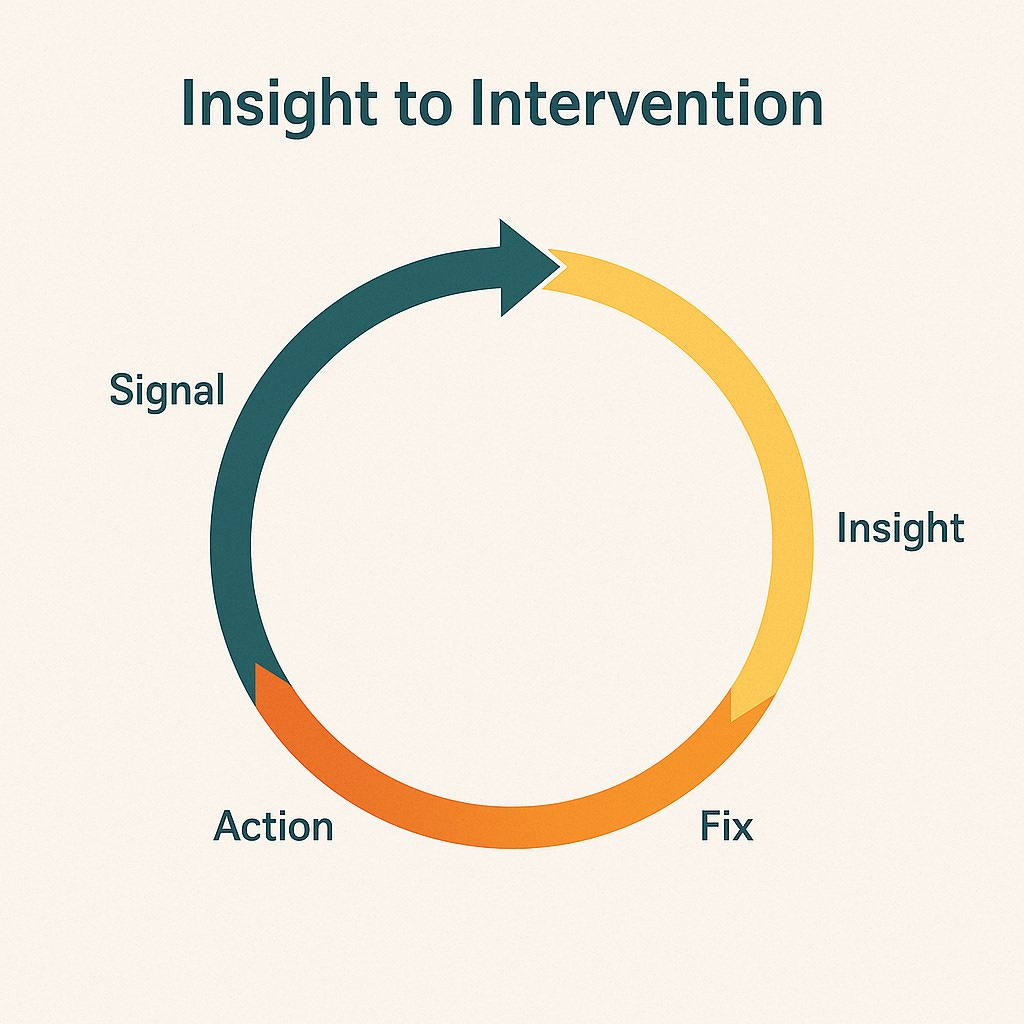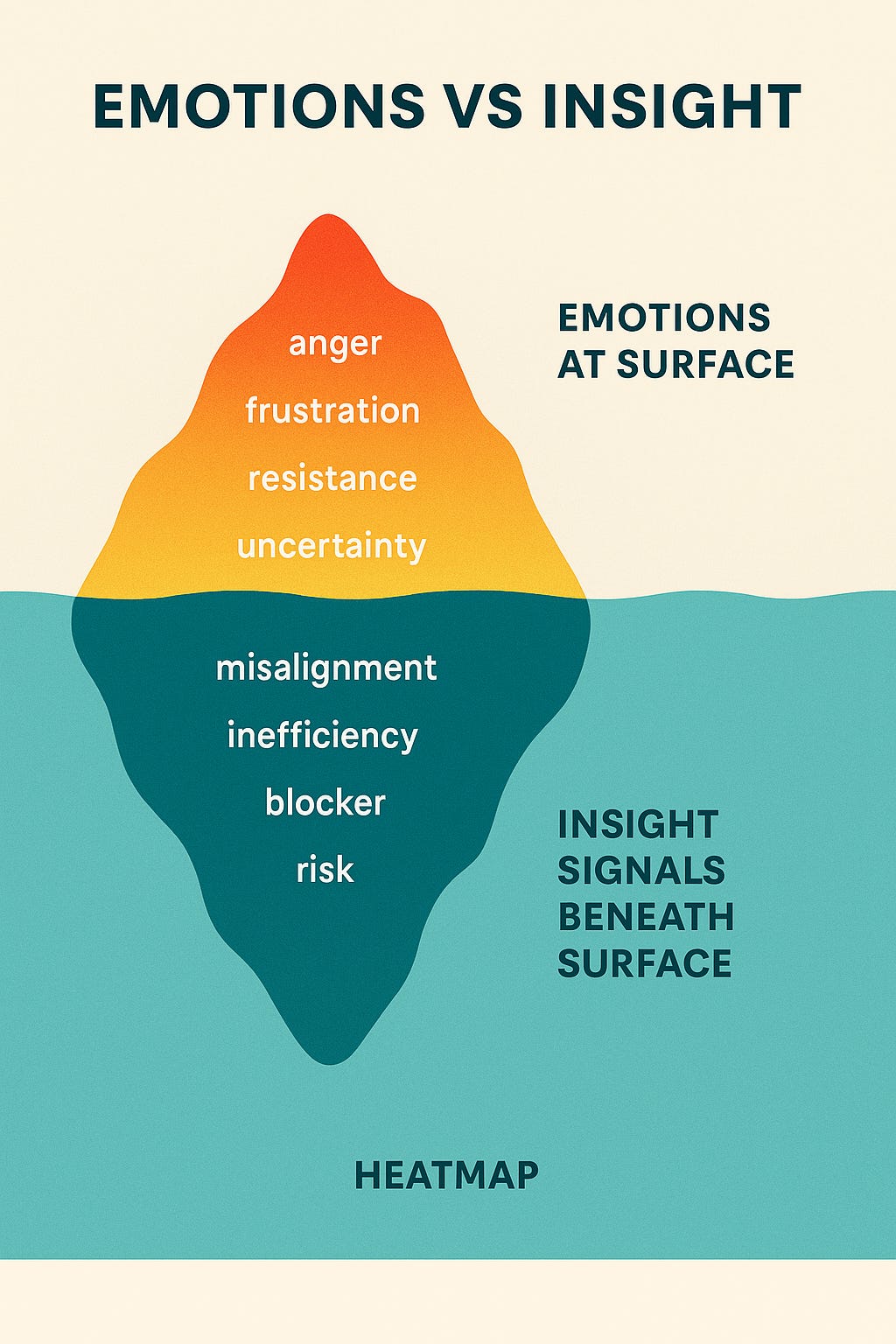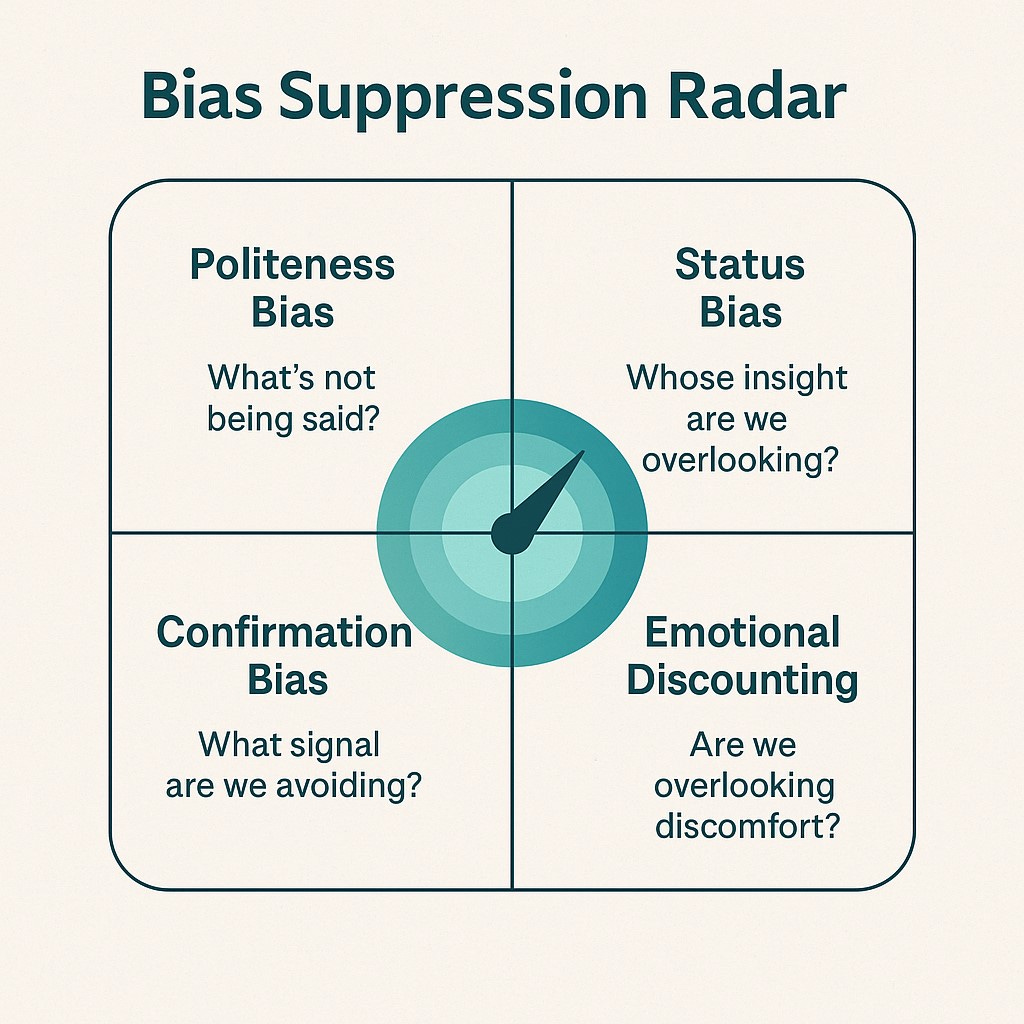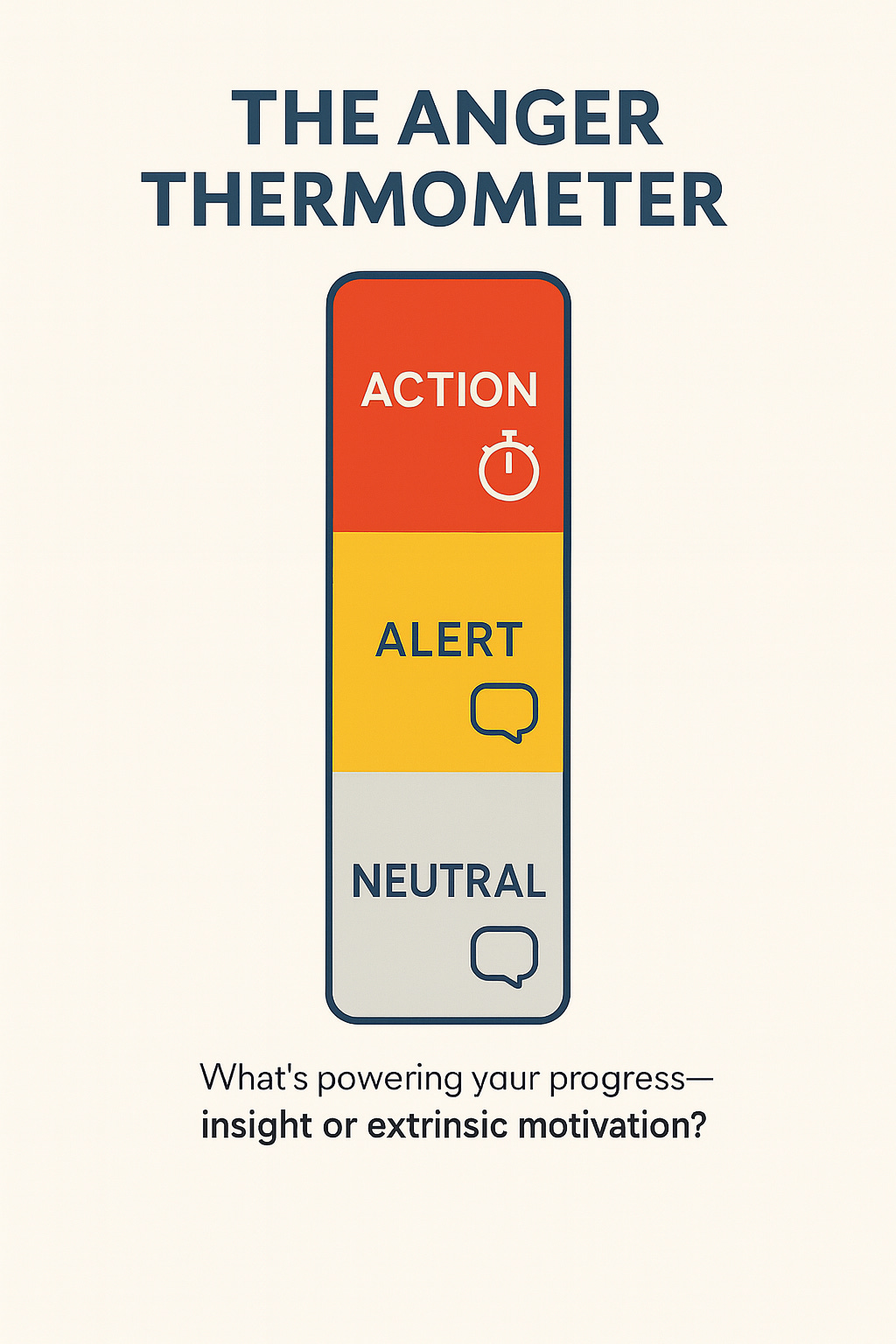Daily Lens: “Good Anger” Is the New Competitive Advantage
When was the last time your team turned irritation into catalyst, not crisis?
Share this article:
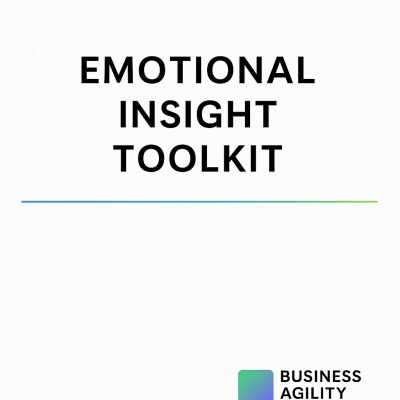
The Misunderstood Signal:
Traditionally, anger in the workplace was (and still is) seen as a red flag, proof of dysfunction or leadership failure. But as the Financial Times reports in Sam Parker’s recent piece "Good Anger", anger can be a compass, not a catastrophe.
Think of society’s most powerful pivots. They often begin with a spark of dissatisfaction: underpaid, unheard, disrespected. When channelled well, anger fuels real gains: improved processes, tighter collaboration, and deeper trust. The real threat isn’t frustration. It’s silenced frustration. Now, I am not advocating child like temper tantrums in order to have ones way. Which is why this section was headed ‘Misunderstood Signal’ as it is the signal that is key. Not the anger! And it is hidden signals that the F.I.X. Framework, Combined with Agile Mindset Mastery(AMM) coaches us to see, and act on. Transforming emotion into adaptive energy. In Working It, Parker reframes anger as emotional data, not a meltdown.
The AMM principle at play: "Emotional Intelligence isn’t soft. It’s systemic."
Teams that decode emotion early, pivot faster. Anger is often the clearest signal that a value has been violated or a boundary crossed. We cover this fully ion the AMM ‘Emotional Insight Toolkit’ which includes a daily pacing -check and is accessible to fully subscribed members of AMM.
“Anger isn't aggression. It's a signal.”
Suppress it, and it morphs into mistrust or burnout. Surface it, and you unlock deeper dialogue and renewal.
(Source: Sam Parker, FT, 2025)
Insight vs. Performance Optics:
Too often, teams default to extrinsic motivation: chasing deadlines, bonuses, or optics. This suppresses insight.
True insight comes when frustration is surfaced, explored, and used as fuel to interrogate a flawed process, a clashing value, or a silent barrier.
Ask yourself, are we reacting to a KPI, or revealing a truth we’ve been ignoring?
Tactical Applications:
Once we learn to spot these signals, we can begin to decipher and act on them but it requires a new approach to thinking. A new mindset!
Try these easy, quick techniques.
Team Scan: In your next meeting, ask, “What’s irritating us?” Frame it as an intelligence check, not a complaint box.
Guided Expression: During retrospectives, include an "anger check" column. Ask, What made us feel dismissed, rushed, or disrespected?
Iteration Response: Turn one tension point into a micro-experiment. For example, “Concerns about time pressure? Let’s trial 15-minute daily pacing check-ins for two weeks.”
A 15-minute daily pacing check-in is a short, structured space for the team to surface emotional tension, cognitive friction, or signals of overload. It differs from a stand-up by focusing not on delivery status, but on how the team is feeling and adapting.
Suggested format:
-
Duration: 15 minutes max
-
Prompts to choose from:
-
What’s dragging or draining energy today?
-
Where are we resisting or rushing?
-
What’s rising emotionally but hasn’t been named?
-
It helps teams catch issues early, adjust expectations, and avoid silent drift. Think of it as a rhythm-setting moment to realign energy and insight.
How Anger Shows Up (and Gets Shut Down):
In many teams, anger shows up disguised: as sarcasm, withdrawal, missed deadlines, or defensive humour. And our first instinct is to smooth it over (shut it down). We have all experienced something that feels familiar to this and we all know that unless openly and supportively addressed, only resurfaces in a future ‘trigger’ moment.
Leaders unintentionally shut it down by reframing it as “not constructive,” “too emotional,” or “unprofessional.” This language protects optics, but blocks insight. And we are blocked by bias!
Bias Watch: What Gets Missed:
-
Politeness Bias: Assuming harmony equals health
-
Status Bias: Discrediting emotion from junior voices
-
Confirmation Bias: Ignoring anger if it contradicts current narrative
-
Emotional Discounting: Equating anger with irrationality or immaturity
Every one of these biases reduces your vision and system’s learning capacity.
Signal Strength: When Is Anger Justified?
How do you tell the difference between justified and unjustified anger? Potentially productive and unproductive responses?
-
Justified anger points to a pattern, a principle, or a power imbalance.
-
Unjustified anger often reflects a personal discomfort, fear, or misaligned expectation.
Either way, anger is data. Don’t dismiss it. Decode it.
The Anger Thermometer
A gradient image displaying levels of anger as energy:
-
White: Calm or Neutral
-
Yellow: (Lower half) Frustration or Irritation (a cue to explore)
-
Yellow: (Upper Half) Anger or Disrespect (a boundary issue)
-
Red: Rage or Injustice (a system warning)
Use anger as a sensor, not a switch.
What’s powering your progress - insight or imitation?
Get the Emotional Insight Toolkit below
Part of the AMM system. Rewire how you lead.
Contents:
-
Emotion-to-Insight Map
-
Anger Framing Cards
-
Bias Suppression Radar
-
Team Scan Prompts
-
Pacing Check-in Guide
-
Full Facilitation Guides
Reflection Question:
When was the last time your team named what frustrated them and actually turned it into action?
References:
-
Parker, Sam. "Good Anger", Financial Times, 2025.
-
Parker, Sam. Working It: Making Work Less Awful and More Meaningful, 2024.
F.I.X. Framework and Agile Mindset Mastery, 2025 Internal Documentation
Read more blog posts
07 Aug 2025
The Cost of Ageism: What Businesses Are Missing by Silencing Experience
Discover how ageism in hiring, product design, and AI development is silently damaging business performance. Including over-55s isn’t charity, it’s strategy. From customer service to innovation, companies silencing experience risk losing market trust, product quality, and long-term sustainability.
18 Jul 2025
Daily Lens: AI vs Human Intelligence
Both Predict - Both Forget - Both Similar - But Different AI is prediction. You are perception. But both forget and humans are better at denying it. Mindset and bias awareness aren’t soft skills. They’re system stabilisers. Keep showing up. That’s the part no machine can do for you.

Get in touch
We want to hear from you
If you're ready to break bias, decode decisions and unlock success, we're here to help. Let's get your transformation journey started!

